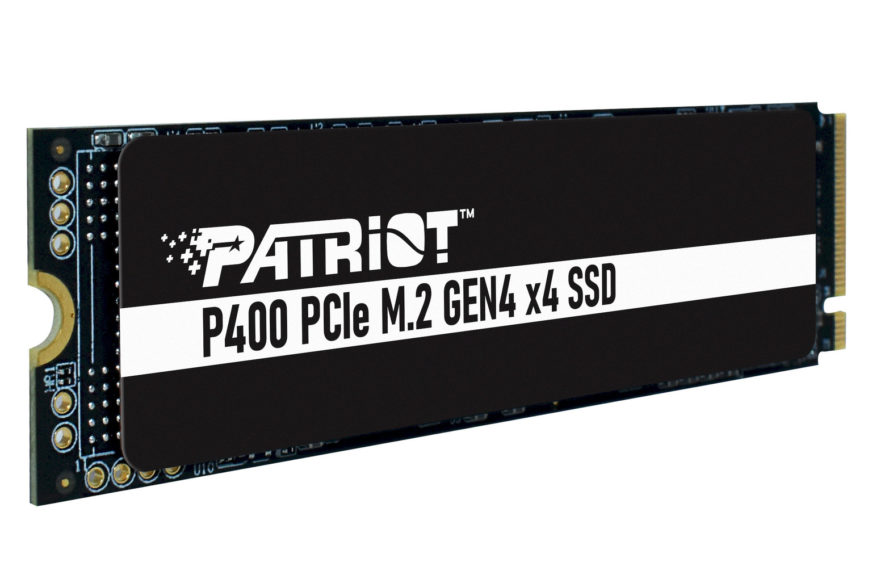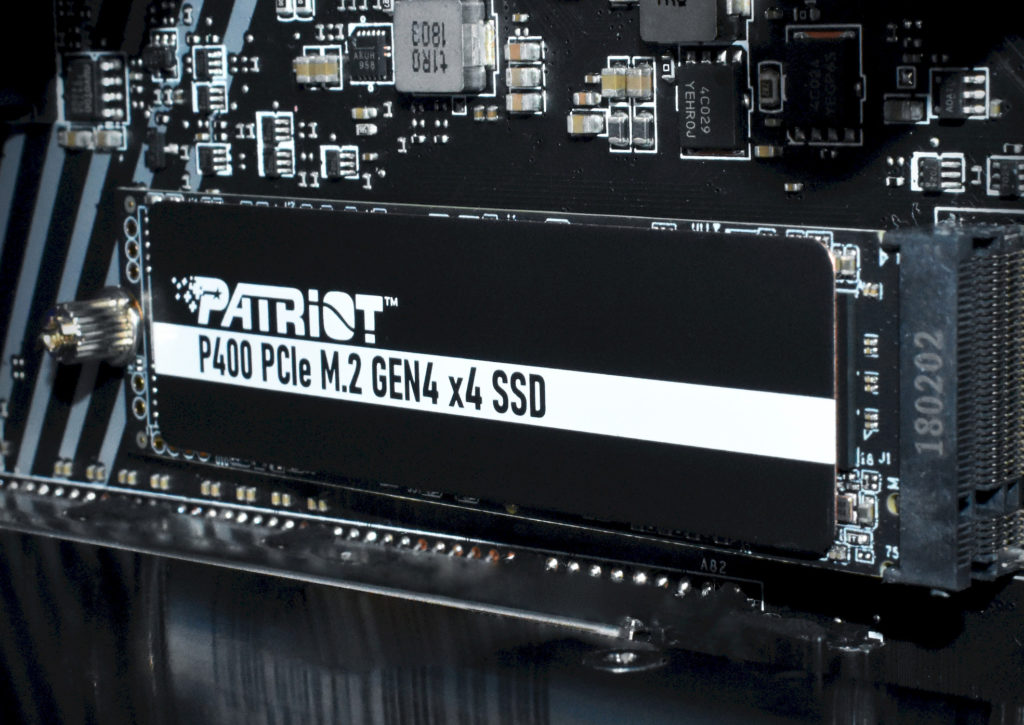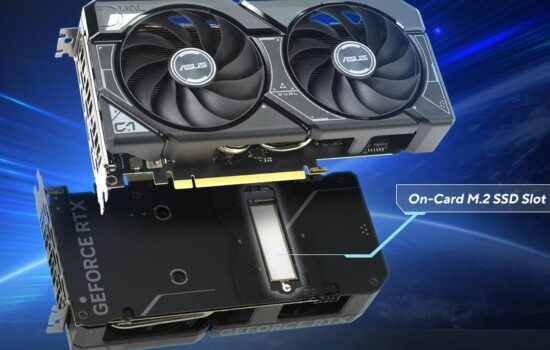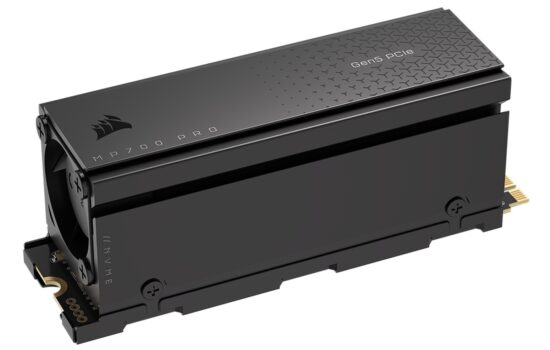PCI Express 4.0 doesn't have to mean huge power consumption any more
Patriot P200 SSD was a notable SATA drive a few years ago, with 1 TB capacity for cheap and decent performance despite being DRAMless. After the NVMe switch with P300, this lineage has produced another interesting SSD: Patriot P400, with the 4 in the name indicating a move to the PCI Express 4.0 interface. For users with suitable motherboards, P400 could prove to be very intersting SSD, and one of the most power efficient yet.
Patriot P400 is produced in M.2 module form factor with a PCI Express 4.0 ×4 interface and 512 GB or 1 TB capacities. The company does not reveal which NAND or which controller is the drive based on, but the vendor specifies write endurance that boils down to 800 erase cycles per cell so it is almost certainly TLC NAND rather than QLC, so there is no problem on that front.
Judging from the performance and specified power consumption, Patriot hasn’t use the usual Phison E18 or E16 controller. The modules seems to be nicely cool and frugal SSDs, considering they use PCIe 4.0. “Full“ power consumption (during I/O activity?) comes down to a nice 2.38 W according to Patriot. Admittedly the 0.38 W idle power consumption, although not bad, could be a bit lower, since Phison drives often have lower power draws when using sleep and low-power modes. In any case the low power consumption of P400 is a trend we do appreciate. PCIe 4.0 (in case of SSD usage) losing the inherent implication of increased power consumption could help it to become truly mainstream, and replace PCIe 3.0 as the baseline level of connectivity.
According to a Polish review, the controller should be Innogrit RainierQX . This is a quad channel DRAMless controller manufactured on 12nm FinFET process (this process is used for the Phison E18 as well, however the E16 was a 28nm die), which judging by the very nice SSD power consumption has been a good choice.
By the way, the modules are not fitted with a cooler out of the box, but given their power consumption levels, it is not necessary. However they do come with a thin heat spreader, allegedly made of grafen.
Performance under heavy load might lack compared to Phison E16-using drives due to the the absence of a DRAM cache. But if you refrain from battering the SSD too hard (e.g. running multiple complex I/O operations at once) even DRAMless SSDs like this aren’t that bad these days, thanks to the common usage of HMB technology.
According to specifications the Patriot P400 should be capable of sequential reading with a speed up to 5000 MB/s and writing (into the SLC cache) up to 4800 MB/s, being faster than SSDs with Phison E16 in that stat. The 512GB version comes with a bit slower write speed at 3300 MB/s. However both versions list the same random access values: writing at up to 620 000 IOPS and reading up to 550 000 IOPS.
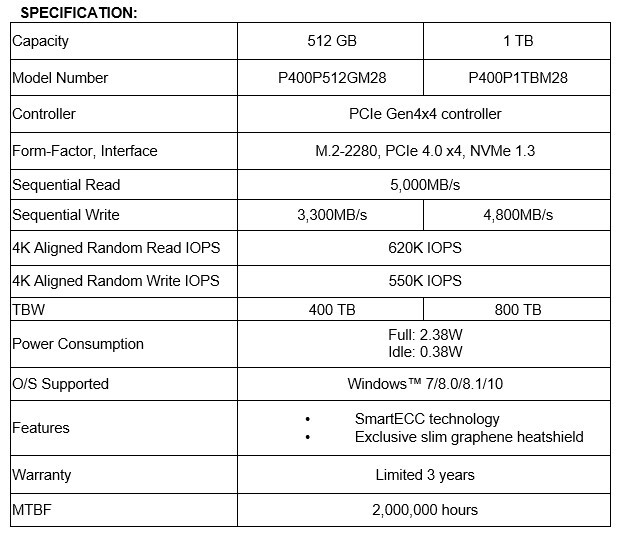
The modules have a three year warranty, while more expensive SSDs usually come covered with five years warranty. The writing endurance of the 512 GB module is rated for 400 TB and the 1 TB version is rated for 800 TB – as already mentioned, 800 erase cycles per cell suggest that Patriot uses 3D TLC NAND. And with these TBW ratings, a switch to QLC would be all but impossible even if Patriot wanted to perform one of those unpopular silent specs changes: QLC would not be able to meet these TBW guarantees.
Patriot P400 modules are already listed by some e-tailers and it seems the drivers are even already in stock. Prices for the 512 GB version start at 94 € to 98 € and at 151 € to 155 € for the 1TB version.
The prices will hopefully decrease a bit in time, since you can currently buy the Aorus Gen4 SSD by Gigabyte (or the Seagate Firecuda 512) with Phison E16 controller and DRAM (and therefore higher performance), for the same amount of money.
Source: Patriot
English translation and edit by Karol Démuth, original text by Jan Olšan, editor for Cnews.cz
⠀⠀





